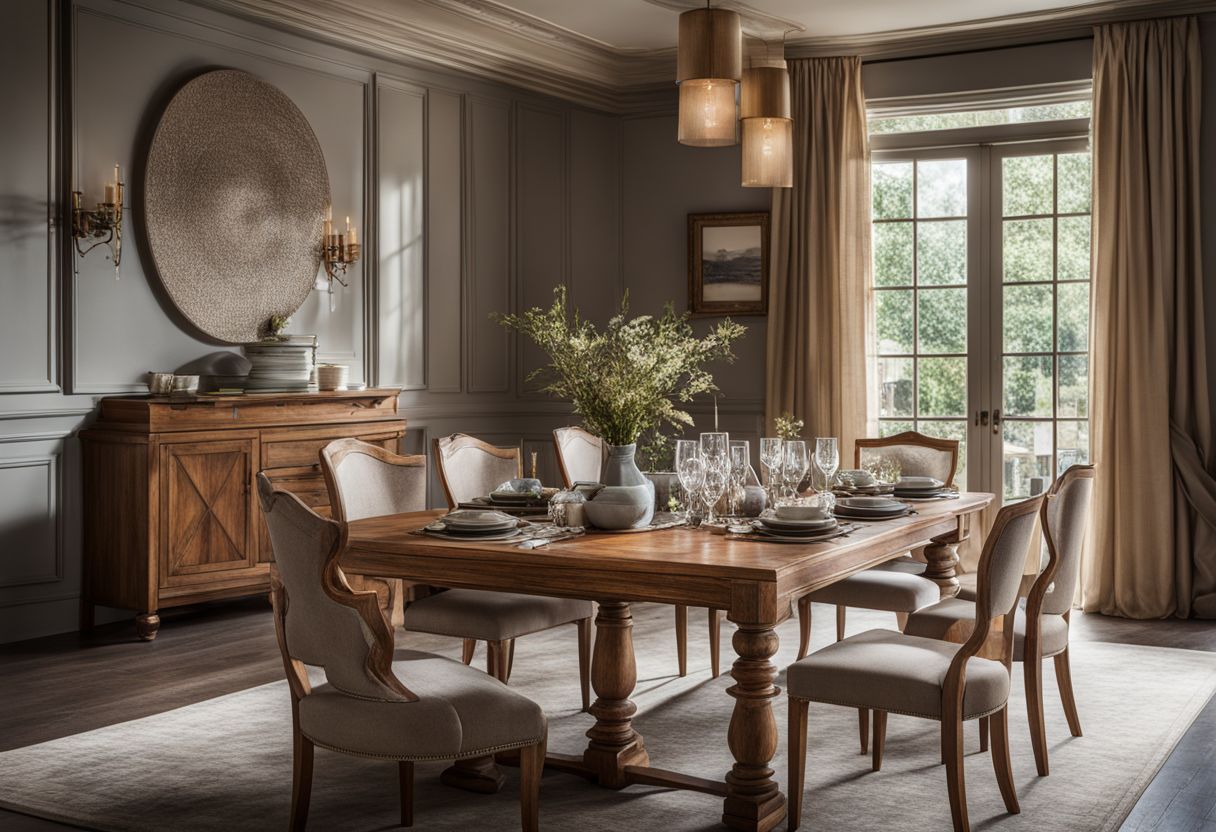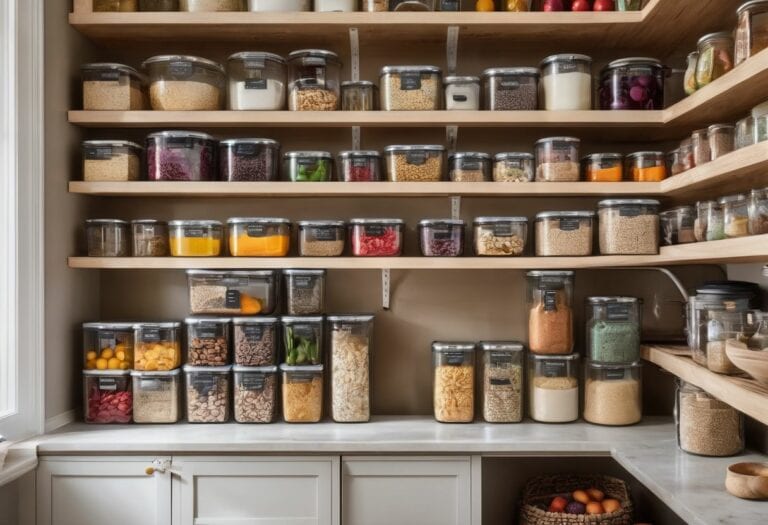Exploring the Surge in Costs: Why is Furniture Getting More Expensive?
Why is furniture getting more expensive? Ever noticed that the price tag on your favorite furniture set is suddenly inching upwards, creeping out of your comfortable reach? You’re not alone. I’ve been keeping an eye on it too, and I couldn’t help but wonder why furniture seems to be getting pricier by the day.
So, let’s embark together on a journey deep into the world of supply chains, artisanship, materials used and even understand how unforeseen circumstances like COVID-19 are affecting these prices.
Ready for some serious detective work as we delve into why that comfy couch you had an eye for is becoming less affordable? Let’s unveil this enigma together!
Key Takeaways
- Global supply chain disruptions, increased demand during COVID-19, and shortages of materials and labor have led to rising furniture prices.
- High – quality materials, customization options, the rising cost of labor, and the influence of design and brand heritage contribute to expensive furniture.
- Factors such as delays in shipping and transportation, increased costs for safety measures during the pandemic, fair wages for workers, original designs and craftsmanship also impact furniture prices.
Impact of Global Supply Chains on Furniture Prices
Global supply chains have had a significant impact on the rising prices of furniture due to delays in shipping and transportation, increased demand during COVID-19, as well as shortages of materials and labor.
Delays in shipping and transportation
Shipping furniture takes a lot of time. Big items like desks and couches take up space in trucks or on ships. Much of this has changed because there are now delays and backups in the system.
This means your new office chair could take up to 20 weeks to arrive! Even getting it from the factory to the ship can be slow due to problems in logistics. These hold-ups have made costs go way up too.
The cost not only affects shipping but also adds more dollars to the final price of your furniture piece!
Increased demand for furniture during COVID-19
More people started to buy furniture when COVID-19 hit. They were staying home more, so they wanted their homes to be nice and cozy. This made the demand for furniture go up a lot.
It happened all over the world and was not normal. The folks who make and sell furniture struggled to keep up with this high demand.
The rush to buy furniture created pressure on how we get goods from one place to another globally. Some call it global supply chains. It’s just like a big machine that brings us our things from all corners of the earth.
When this machine gets jammed, prices go up for items like furniture because there’s less available but everyone wants more!
Shortage of materials and labor
Furniture prices keep going up because of a shortage of materials and labor. The stuff needed to make furniture is not easy to get right now. This makes it take longer to build chairs, tables, and other items.
At the same time, there aren’t enough workers. Some may be sick or scared of getting sick from COVID-19. Others can’t find jobs that pay them fairly for their hard work. Both these problems mean less furniture gets made and sent out to shops on time.
It’s like waiting in line but the line never moves! So the price goes up because everyone wants what little is available.
High-Quality Materials Used in Furniture Production

Furniture companies are using high-quality materials to create original designs and promote sustainability.
Original designs and craftsmanship
I really appreciate furniture that showcases original designs and craftsmanship. When artists, craftspeople, or designers put their heart and soul into creating unique pieces, it often means higher prices.
The attention to detail, the use of fine materials, and the skillful techniques employed in crafting these handmade pieces make them more valuable. While modern manufacturing methods have made furniture production more efficient and affordable, there is still a strong demand for traditional handcrafted furniture because of its exquisite finishes and high-quality craftsmanship.
That’s why custom or original furniture tends to be more expensive compared to mass-produced options – each piece is made with care and tailored to individual design preferences.
Sustainability and eco-friendliness
I believe that sustainability and eco-friendliness play a significant role in the increasing cost of furniture. Many sustainable furniture manufacturers prioritize using eco-friendly materials like reclaimed wood, recycled metals, and natural fibers.
These green materials are often more expensive than their non-sustainable counterparts but contribute to the overall quality of the furniture. As people become more aware of their environmental impact, there is a growing demand for furniture made with organic raw materials that are readily available.
Examples include cotton, linen, and upcycled materials. The use of these sustainable materials adds to the cost of production but aligns with our desire to minimize our ecological footprint.
Customization Options
Customization options in furniture production lead to more personalized and unique pieces, but also result in higher costs for production.
More personalized and unique pieces
Customization options in furniture have become increasingly popular, allowing individuals to create more personalized and unique pieces for their homes. This trend has contributed to the rising cost of furniture.
When customers choose to customize their furniture, it requires additional labor and materials which can drive up the manufacturing costs. Moreover, offering customization options allows furniture manufacturers to differentiate themselves from competitors by providing exclusive designs that cannot be found elsewhere.
As a result, customized furniture commands a higher price point compared to mass-produced items because it is considered more unique and tailored to individual preferences. The demand for personalized furniture reflects a desire for greater attention to detail, craftsmanship, and exclusivity in home decor choices.
Higher costs for production
Customization options for furniture often result in higher prices. When customers choose to personalize their furniture, it requires additional manufacturing and upholstery work, which increases the overall cost.
Customized pieces are generally more expensive than mass-produced ones because they offer unique design and meticulous craftsmanship. These specialized options require extra time and skill to create, leading to higher production costs.
However, offering customization options can be beneficial for both manufacturers and customers as it allows for unique and tailored furniture pieces while increasing sales and revenue.
The Rising Cost of Labor
Labor costs have been a significant factor contributing to the increasing prices of furniture, as fair wages for workers and labor-intensive techniques drive up production expenses.
Fair wages for workers
Labor issues, like making sure workers get paid fairly, are a big concern in the furniture industry. It’s important for workers to earn enough money to support themselves and their families.
This means paying them a fair wage that covers their basic needs and allows them to have a good quality of life. Fair wages also help reduce income inequality and promote fairness in the workplace.
Ensuring fair wages for workers is not just the right thing to do, but it also contributes to a more sustainable and ethical industry overall.
Handcrafted and labor-intensive techniques
Crafting furniture by hand using labor-intensive techniques is a time-consuming process that requires skilled artisans. These techniques involve meticulous attention to detail and a high level of craftsmanship.
The use of manual labor adds value to the final product, making it more unique and special. However, this artisanal approach comes with higher costs, as it requires skilled workers who deserve fair wages for their expertise.
Additionally, the time and effort involved in handcrafting furniture contribute to its overall price. This is why handcrafted pieces often come with a premium price tag compared to mass-produced items.
Influence of Design and Brand Heritage
Design and brand heritage play a significant role in the increasing prices of furniture, with designer and luxury brands commanding high prices due to their reputation for quality and craftsmanship.
Designer and luxury brands commanding high prices
Luxury designer brands are known for their high prices, but have you ever wondered why? Well, it’s because these brands capitalize on their heritage and archives to provide reassurance and prestige to customers.
When you purchase a piece of furniture from a well-known luxury brand, you’re not just buying a functional item – you’re buying into a lifestyle. The price tag represents the exclusivity and status that comes with owning something from that brand.
In fact, luxury goods can be seen as a way for consumers to showcase their wealth and taste. Despite the high prices, these brands continue to sell well because they offer top-notch quality, impeccable craftsmanship, and unique designs that stand the test of time.
Vintage and antique furniture value
Vintage and antique furniture hold significant value in today’s market. The quality of materials used plays a crucial role in determining their worth. High-quality craftsmanship, unique design, and ornate characteristics all contribute to their appeal.
As the demand for vintage furniture grows, prices continue to rise. In fact, Chairish reported a 60 percent increase in sales and 1stDibs saw significant growth in vintage furniture sales as well.
So, if you’re considering investing in vintage or antique pieces, keep in mind that their historical significance and decorative allure make them highly sought after and valuable additions to your home decor collection.
Impact of COVID-19 on Furniture Prices
The COVID-19 pandemic has significantly impacted furniture prices, as supply chain disruptions and increased costs for safety measures have led to higher manufacturing and shipping expenses.
Supply chain disruptions
The impact of COVID-19 has caused disruptions in the furniture supply chain, resulting in higher prices. The pandemic, along with other challenges like the Suez Canal blockage and Brexit, has made it difficult to manufacture and transport furniture.
Delays in shipping and transportation have slowed down the delivery process, creating a scarcity of furniture in stores. Additionally, there is an increased demand for furniture as more people are spending time at home due to lockdowns and remote work arrangements.
This combination of limited supply and high demand has led to price increases. Shortages of materials and labor have also played a role in driving up costs. With these disruptions affecting every aspect of the supply chain, from manufacturing to distribution, it’s no wonder that furniture prices have become more expensive during these times.
Increased costs for safety measures
During the COVID-19 pandemic, furniture prices have gone up because of increased costs for safety measures. Retailers and manufacturers have had to invest in things like personal protective equipment (PPE), cleaning supplies, and social distancing measures.
These added expenses add up and contribute to the overall price of furniture. For example, the federal government spent billions on new office furniture during the pandemic as employees worked from home.
Retailers like T-Mobile also reported spending millions on safety measures. So, when you’re shopping for furniture now, keep in mind that these extra costs are a factor in why it might be more expensive than before.
Ways to Make Furniture More Affordable
Opt for DIY or pre-owned furniture and explore financing options for larger purchases.
Opting for DIY or pre-owned furniture
For those of us looking to save money on furniture, opting for do-it-yourself (DIY) or pre-owned pieces can be a smart choice. DIY furniture allows you to tap into your creativity and create unique pieces that match your personal style.
It’s also often more affordable since you’re not paying for the brand name or designer markup. Pre-owned furniture, whether it’s vintage, thrifted, or gently used, is another budget-friendly option.
Not only can you find quality pieces at lower prices, but buying second-hand is also a sustainable choice as it reduces waste and gives furniture a second life. So don’t shy away from these alternatives – they can help you furnish your home without breaking the bank!
Using financing options for larger purchases
When it comes to buying furniture, using financing options can be a great way to make larger purchases more affordable. With payment plans and consumer financing, you can spread the cost of your furniture over time.
This not only helps you manage your budget but also allows you to get the furniture you need without having to pay for it all upfront. Retailers often offer attractive financing offers with low or 0% interest loans, making it even more appealing for customers.
However, it’s important to be aware of any potential hidden costs or drawbacks that may come with these financing options. That being said, utilizing financing can make high-quality and stylish furniture accessible to a wider range of shoppers who might not have been able to afford it otherwise.
Solutions for Home Improvement
To make furniture more affordable, consider DIY projects or purchasing pre-owned furniture. Additionally, explore financing options for larger purchases to spread out the cost over time.
Utilizing mobile apps for furniture hunting
When it comes to finding furniture, mobile apps can be a game-changer. With the integration of augmented reality technology, these apps allow you to visualize how furniture will look in your home before making a purchase.
You can browse through different styles and designs, explore various color options, and even see how the dimensions of the furniture fit into your space. These apps provide a convenient and interactive way to shop for furniture, giving you the ability to make more informed decisions and ensure that what you buy is exactly what you want.
By utilizing mobile apps for furniture hunting, you can enhance your retail experience and find the perfect pieces for your home with ease.
Educating oneself on different types of wood and their uses
It’s important to educate yourself about different types of wood and their uses when it comes to furniture. There are many options available, each with its own unique qualities and benefits.
For example, solid wood furniture made from high-quality materials like walnut or cherry tends to be more expensive due to their durability and beauty. On the other hand, spruce, pine, and fir (SPF) are commonly used for premium furniture and can be found as dimensional lumber at home improvement centers.
Not all hardwoods are suitable for furniture making, as they can be expensive and typically used in high-end manufacturing. By understanding the characteristics of different wood species, you can make informed decisions when choosing furniture that fits your needs and budget.
Conclusion
In conclusion, furniture prices are rising due to various factors. Global supply chain disruptions, increased demand during COVID-19, and shortages of materials and labor have all contributed to higher costs.
Additionally, factors such as high-quality materials, customization options, the rising cost of labor, and the influence of design and brand heritage also play a role in expensive furniture.
However, there are ways to make furniture more affordable by considering alternatives and exploring financing options.
FAQs
1. Why is furniture getting more expensive?
Furniture is getting more expensive due to factors such as increased material costs, higher labor wages, and inflation.
2. Will furniture prices continue to rise in the future?
It’s possible that furniture prices will continue to rise in the future, depending on various economic factors and market conditions.
3. Are there any alternatives to buying expensive furniture?
Yes, there are alternatives to buying expensive furniture such as shopping for second-hand or vintage pieces, DIY projects, or opting for budget-friendly options.
4. How can I save money when purchasing furniture?
You can save money when purchasing furniture by comparing prices from different stores, looking for sales or discounts, negotiating with sellers, or considering pre-owned items.
5. What should I consider before investing in expensive furniture?
Before investing in expensive furniture, it’s important to consider factors like quality, durability, style relevance over time, personal needs and preferences,and your budgetary constraints.








